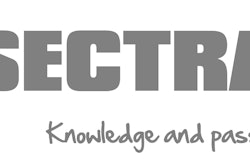Breast imaging providers in the U.S. may soon witness a surge of new full-field digital mammography (FFDM) products on the market, thanks to the U.S. Food and Drug Administration's (FDA) November 4 decision to ease its rules for approval of FFDM technology.
Equipment purchasers can expect more choices when buying FFDM equipment, while vendors anticipate more competition and lower product development costs due to the FDA's reclassification of FFDM systems from high-risk class III to medium-risk class II devices.
The new policy means that digital mammography is no longer subject to premarket approval (PMA) applications that include clinical trials to demonstrate safety and efficacy. New products can be cleared for marketing in the U.S. through the FDA's 510(k) process, which simply requires that products demonstrate equivalence to previously approved FFDM systems.
An expensive process
In companies that have navigated it, the PMA process for FFDM products has typically taken more than two years and cost hundreds of thousands of dollars. Though the FDA has attached special controls on its new 510(k) procedures for FFDM, industry sources anticipate that new applications with the FDA will be processed in a few months, with the costs measured in tens of thousands of dollars.
David Caumartin, global general manager of mammography at GE Healthcare of Chalfont St. Giles, U.K., predicted the change will help manufacturers bring innovations into the market more quickly, without sacrificing product safety.
"The class II process for FFDM still obliges us to be very thorough in our verification and validation, but it will probably be more up to each manufacturer to define how they do the study," Caumartin said.
Pam Benkert, general manager of women's healthcare at Philips Healthcare of Andover, MA, said the new policy will benefit patients and providers. Now freed from the PMA process, vendors will no longer be required to recruit patients into clinical trials that expose them to radiation twice during controlled comparisons between digital and analog x-ray mammography systems.
"The shorter time frame to get to market will help us achieve our ambitions of making early detection, diagnosis, and personalized care a reality," Benkert said in an interview with AuntMinnie.com.
An executive with Carestream Health of Rochester, NY, accentuated the positive aspects of having the FDA liberalize premarket review for FFDM on the same day the firm's DirectView computed radiography (CR) mammography system was approved after going through the PMA process. The company plans on capitalizing on the fulfillment of PMA requirements as a selling point.
"We are just very excited to offer our customers a product that has met the rigorous guidelines of a PMA," said Sujatha Ramanujan, PhD, Carestream's product line manager, for its computer-aided detection business and CR mammography. "There is a lot of pride in that, and we are happy to present that to our customers."
Carestream's DirectView joins the ClearView-CSm CR-based FFDM system from Fujifilm Medical Systems USA of Stamford, CT, as the two CR-based FFDM systems authorized for sales in the U.S.
In late breaking news, Siemens Healthcare of Malvern, PA, announced on November 17 that its Mammomat Inspiration FFDM has become the most recent digital radiography (DR)-based FFDM system approved for U.S. sales, following FDA approval of the product's PMA.
GE and Hologic of Bedford, MA, rank first and second in sales in the U.S. mammography market. About 70% of the mammography units in use in the U.S. are digital, according to the FDA, and more than 6,100 accredited breast imaging facilities operate at least one digital unit.
The FDA announcement in early November came too late to affect FFDM product lineups at the RSNA meeting later this month, noted James Culley, PhD, director of marketing at Hologic.
"The rule change just resets the clock for products in the [FDA] queue," he said. "That means we shouldn't see much activity until March or so in a market that is already pretty saturated with 2D systems."
The rule change may allow IMS of Bologna, Italy, to finally break through the regulatory barriers that have kept its Giotto FFDM system out of the U.S. since a PMA filing in 2004. The company contracted five regulatory consultants over the years and spent more than 100,000 euros ($136,000 U.S.) on the PMA process without approval, noted Achille Albanese, marketing director.
In the same period, IMS sold 500 Giotto systems around the world, including 100 in Italy. Albanese estimates that the firm would have installed another 500 without the regulatory impasse. He expects to quickly secure 510(k) clearance.
"Our big hope is that we will be finally able to export our FFDM to the U.S. market," he said.
Other companies that may also soon introduce FFDM systems in the U.S. include Philips; Agfa HealthCare of Mortsel, Belgium; Planmed of Helsinki; and Sectra of Linköping, Sweden. Albanese believes that vendors are drawn to the U.S. because its represents half of the global market for mammography.
Special requirements
Though new FFDM system must comply with special control requirements to qualify for 510(k) clearance, vendors are confident the rules will not be difficult to address. Equivalency testing will include a phantom test for spatial resolution, signal-to-noise and radiation measurements, and expert physician review of two-view exams of both breasts from six patients.
"There is nothing particularly onerous about them," Carestream's Ramanujan said.
The new policy specifically excluded digital breast tomosynthesis and breast CT products from the less-stringent standards. At an FDA panel meeting in September, however, federal regulators recognized the potential importance of tomosynthesis for breast imaging practices, Ramanujan noted. In a release, Hologic announced that the FDA's Radiological Devices Panel unanimously voted September 24 that the firm's PMA established safety and efficacy for its Selena Dimensions 3D digital breast tomosynthesis system.
While praising the FDA for reclassifying FFDM, vendors still fault the agency for taking so long to do it. One executive noted that discussion between industry and the federal agency were held as early as 2006 about downgrading its status. Indeed, the first PMA for an FFDM system -- GE's Senographe 2000D -- was granted in 2000 -- meaning that this month's ruling came more than a decade later.
Industry watchers expressed frustration when they learned at the FDA's Medical Devices Advisory Committee meeting in November 2009 that it would take another year to prepare final rules enabling implementation.
"It is hard to say clearly what happened," said Stephen Vastagh, director of international and industry programs at Medical Imaging and Technology Alliance (MITA). "There was a general slowdown in the FDA review process, and a trend toward requiring more clinical data than the risk class of the product warranted."
By James Brice
AuntMinnie.com contributing writer
November 18, 2010
Related Reading
Siemens gets PMA for FFDM unit, November 18, 2010
FDA eases rules on digital mammography devices, November 4, 2010
FDA panel gives nod to Hologic tomosynthesis PMA, September 24, 2010
FDA takes baby steps in reclassifying FFDM, CAD systems, November 23, 2009
Mammography market awaits new FDA rules on FFDM regulation, October 13, 2009
Copyright © 2010 AuntMinnie.com



















